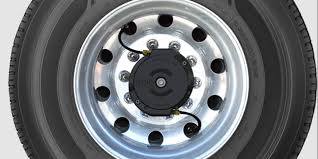The wheel is one of humanity’s oldest and most transformative inventions. For millennia, its fundamental design has remained unchanged: a hub, spokes, and a rim. While materials and manufacturing have evolved, the core concept has stayed remarkably consistent. But what if we could reimagine this ancient technology for the 21st century? An innovation, the Halo Tire, is doing just that, challenging our assumptions about what a wheel can be and promising significant advancements in performance and safety.
The Halo Tire isn’t just an incremental update; it’s a fundamental rethinking of wheel technology. By integrating cutting-edge materials and engineering principles, it addresses some of the most persistent limitations of traditional tires, such as punctures, pressure loss, and maintenance. This technology represents a significant leap forward, with the potential to impact everything from personal vehicles and commercial trucking to aerospace applications.
This post will explore the groundbreaking concept of the Halo Tire. We’ll examine the technology behind it, its potential benefits over conventional tires, and the exciting possibilities it unlocks for the future of transportation.
What is the Halo Tire?
At its core, the Halo Tire is an airless tire system that merges the wheel and tire into a single, cohesive unit. Unlike traditional pneumatic tires that rely on pressurized air to maintain their shape and support a vehicle’s weight, the Halo Tire uses a complex, flexible structure. This structure, often composed of advanced polymers or resilient composites, is engineered to deform under load and then return to its original shape, effectively mimicking the cushioning effect of an air-filled tire.
The design typically features a web-like or spoke-like internal framework that provides both strength and flexibility. This network of resilient spokes absorbs impacts from road imperfections, providing a smooth ride while eliminating the risk of a flat tire. Because there is no air to lose, the Halo Tire is immune to punctures from nails, glass, or other road debris that would disable a conventional tire.
This innovation moves beyond simple “run-flat” technology, which only allows for temporary, limited-speed operation after a puncture. The Halo Tire is designed for full performance and durability from the outset, operating without air as its default state.
The Engineering Behind the Innovation
The development of a viable airless tire, like the Halo Tire, has been a long-standing engineering challenge. The primary obstacle has been creating a structure that can simultaneously support a heavy load, provide a comfortable ride, and withstand the heat and stress generated at high speeds.
Engineers working on the Halo Tire have addressed these challenges through several key innovations:
- Advanced Materials: The spokes or webbing of the Halo Tire are made from high-strength, flexible polymers. These materials must be resilient enough to bend and flex millions of times without breaking or losing their structural integrity. They need to perform consistently across a wide range of temperatures, from cold to the extreme heat generated during prolonged driving.
- Complex Geometric Structures: The internal structure of the Halo Tire is not random. It is the result of sophisticated computer modeling and finite element analysis. The geometry of the spokes is optimized to distribute stress evenly, absorb impacts efficiently, and provide the desired handling characteristics, such as lateral stiffness for cornering.
- Heat Dissipation: One of the major hurdles for airless tires is managing heat buildup. As the tire’s structure flexes and deforms, it generates heat. Excessive heat can degrade the materials and lead to failure. The open design of the Halo Tire naturally promotes airflow, which helps dissipate heat far more effectively than a solid rubber tire could.
This combination of material science and structural engineering allows the Halo Tire to deliver performance that aims to be comparable, if not superior, to today’s best pneumatic tires.
Potential Advantages Over Conventional Tires
The shift to a technology like the Halo Tire offers a wide array of benefits that could transform the driving experience and the tire industry as a whole.
Enhanced Safety and Reliability
The most immediate and obvious benefit is the elimination of flat tires. Punctures and blowouts are a significant cause of accidents and roadside emergencies. With the Halo Tire, drivers would no longer have to worry about being stranded by a flat or losing control of their vehicle due to sudden tire failure. This increases personal safety and provides unparalleled peace of mind.
Reduced Maintenance
Conventional tires require regular pressure checks and inflation. Underinflation can lead to poor fuel economy, uneven wear, and an increased risk of blowouts. The Halo Tire eliminates this maintenance requirement. For fleet operators in commercial trucking or ride-sharing services, this translates into significant savings in time, labor, and operational costs.
Longer Lifespan and Sustainability
The Halo Tire is designed for durability. While the outer tread will still wear down over time, the core structure is built to last significantly longer than a traditional tire. Furthermore, some designs allow for the tread to be re-applied or “retreaded” multiple times, extending the life of the wheel unit even further. This reduces the number of tires being discarded each year, leading to substantial environmental benefits. Fewer raw materials would be needed for new tire production, and the problem of tire disposal would be greatly diminished.
Improved Performance Characteristics
Engineers can fine-tune the performance of a Halo Tire with a high degree of precision. By adjusting the stiffness and geometry of the internal spokes, they can dial in specific handling characteristics. For example, they could design a tire with high lateral stiffness for sporty, responsive cornering, while still maintaining vertical compliance for a comfortable ride. This level of customization is difficult to achieve with air-filled tires, where a single air pressure value must balance competing demands.
Charting the Course for the Future
Halo Tire continues its journey from concept to mainstream adoption, with prototypes already tested by major tire manufacturers and automotive companies. While challenges such as large-scale production costs, ride comfort, and road noise reduction remain, active development is rapidly addressing these areas. The potential applications are vast, ranging from military vehicles operating in harsh environments to construction equipment facing sharp debris, and even future exploratory vehicles on other planets where a flat tire could end a mission. Ultimately, the Halo Tire represents more than a product; it embodies a paradigm shift in how we view one of the most essential components of modern mobility—a true testament to human ingenuity and our relentless pursuit of innovation.

















